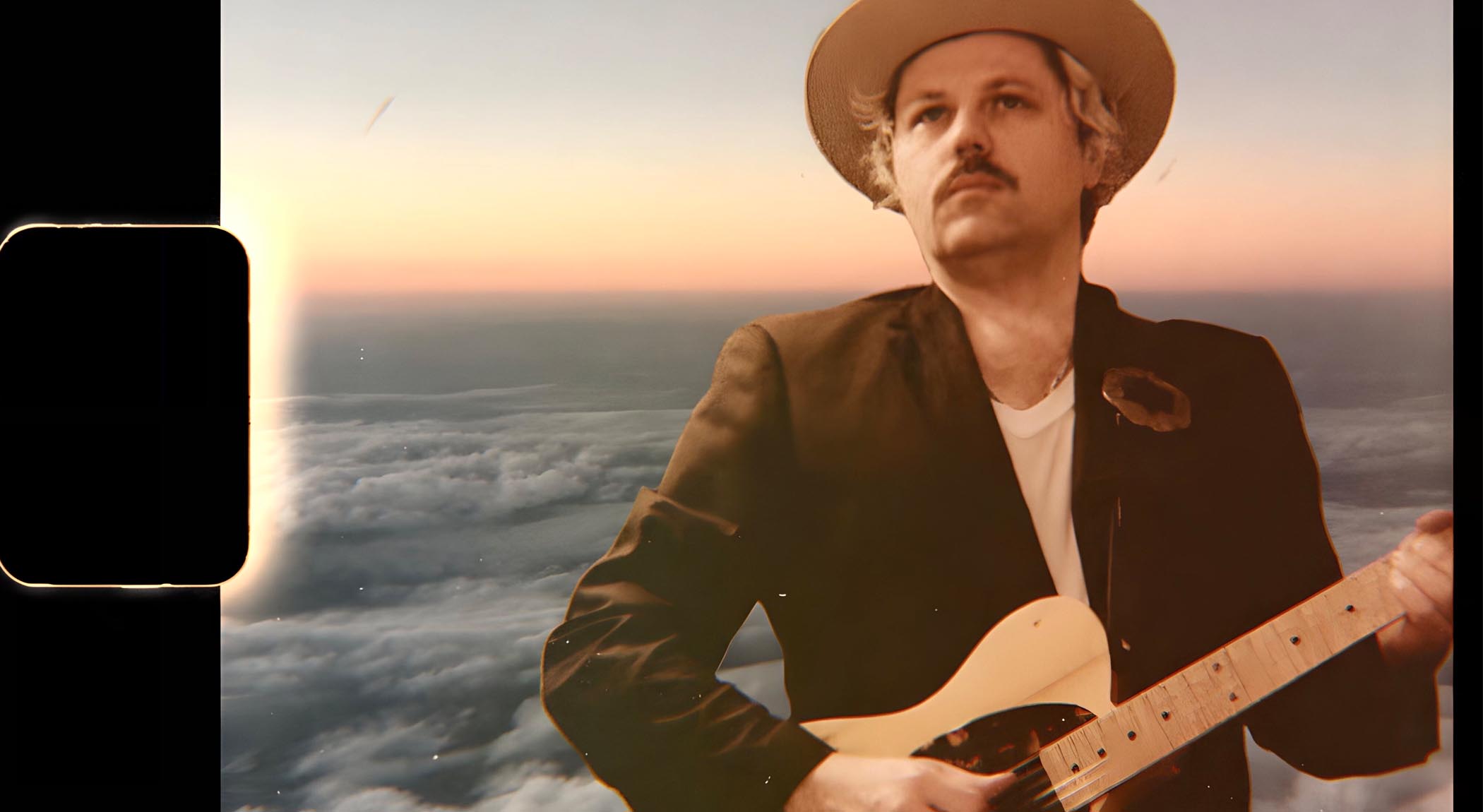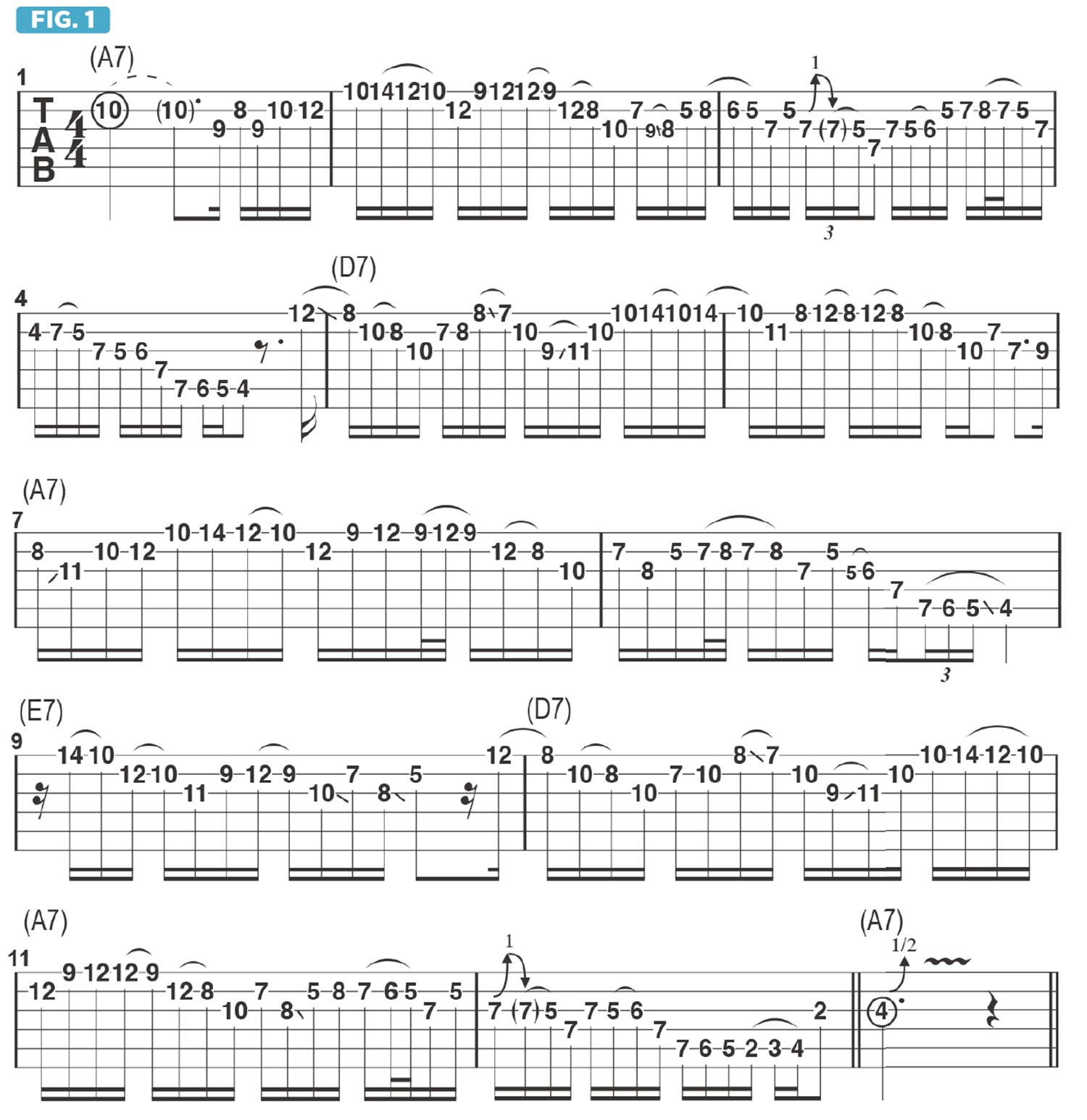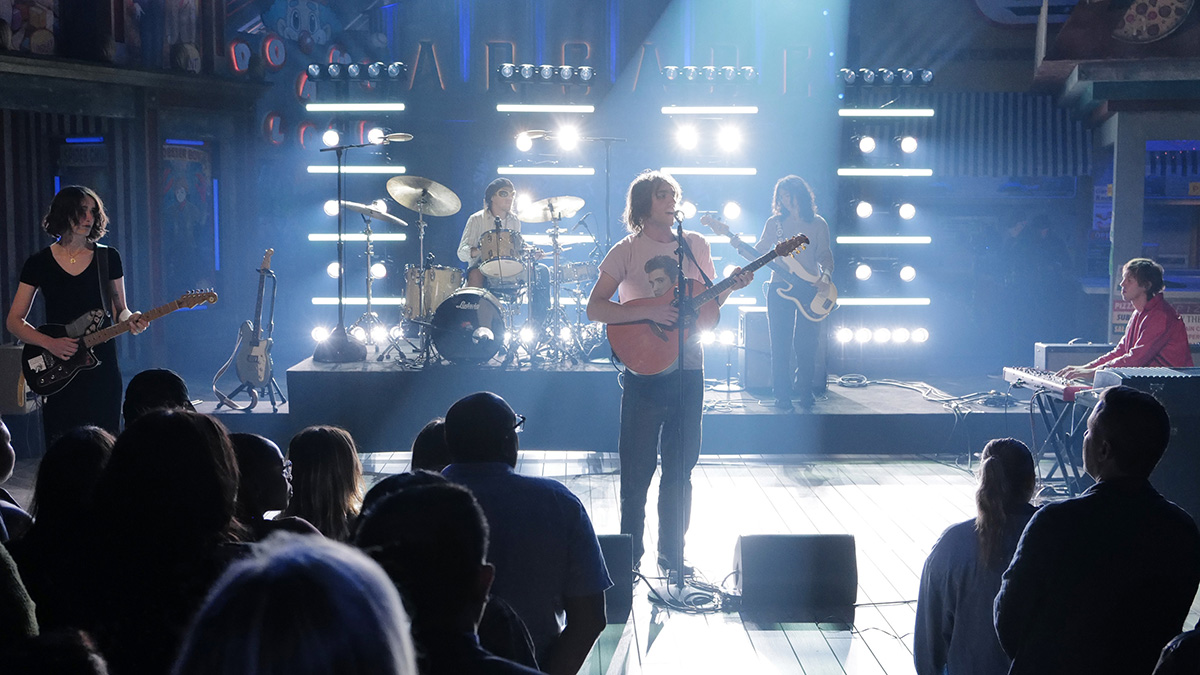Using arpeggios to imply dominant 9th chords in your solos sounds complicated – but Jim Oblon can explain all, and it might be the secret sauce your improvised leads are waiting for

In my last column, we looked at some rhythm and lead approaches to playing over a 12-bar blues progression in the key of A that’s set to a brisk, country-style “train beat” with a swing-16ths feel.
Using this same template, I’d now like to offer some examples of ways to apply rootless dominant 9th chord arpeggios over the progression’s I, IV and V chords, A7, D7 and E7.
Figure 1 is an improvised solo played over the 12-bar form. Globally, one can think of the lines played over A7 as being based on the A Mixolydian mode (A, B, C#, D, E, F#, G), the lines over D7 as being based on D Mixolydian (D, E, F#, G, A, B, C) and those over E7 as based on E Mixolydian (E, F#, G#, A, B, C#, D).
But I’ll also use notes from the A minor pentatonic scale (A, C, D, E, G) and the A blues scale (A, C, D, Eb, E, G), as well as some chromatic passing tones, to spice things up.
I begin the solo with an A minor pentatonic approach but then reference A Mixolydian with the inclusion of the notes B and D and F#. In bar 2, I imply, or describe, an A9 chord sound (A, C#, E, G, B) with the notes G, B, C# and E. Notice that I don't play the A root note here, which is already implied in context.
Figure 2 shows a rootless A9 arpeggio played straight up and down. These four notes may also be thought of as a C#m7b5 arpeggio (C#, E, G, B).
At the end of bar 2, I use the chromatic notes F and Eb as I shift from 8th position down to 5th. The Eb at the beginning bar 4 serves to set up the melodic shape that follows, as I descend the A blues scale while also touching upon the chord’s major 3rd, C#.
All the latest guitar news, interviews, lessons, reviews, deals and more, direct to your inbox!
When the progression moves to D7 in bar 5, I similarly describe a D9 sound (D, F#, A, C, E) by playing the notes C, E, A and F#. Figure 3 illustrates these notes in isolation. Notice that there’s no D root note included here and that the four notes may also be thought of as an F#m7b5 arpeggio (F#, A, C, E).
When moving back to A7 in bar 7 of Figure 1, I once again use elements of an A9 arpeggio, with similar chromaticism brought into play as the line evolves.
Bar 9 brings us to E7, and here I make use of the same form I had applied to the IV chord, but moved up two frets, or a whole step, to describe an E9 sound (E, G#, B, D, F#).
Figure 4 shows the notes of all three rootless dominant 9th arpeggios – E9, D9 and A9. It may seem complicated, but it’s actually pretty straightforward, as each chord is approached with the same tones – the 3rd, 5th, b7th and 9th – played in varying orders. Try incorporating these shapes into your own solos.
Virtuoso guitarist/multi-instrumentalist Jim Oblon has toured and recorded with Paul Simon, Lucinda Williams and many others.
His latest album is 2023’s I Wanna Be Loved.




